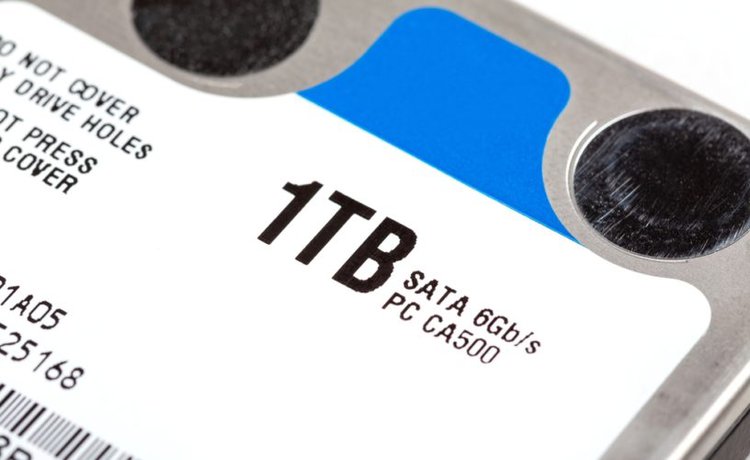How Many 4K Movies Can 1 TB Hold?

What To Know
- An hour of 4K movie content typically takes up about 42 GB of storage.
- A 1 TB storage device can hold approximately 142.5 hours (or 95 movies) of average-length 4K content.
- Several factors, including compression, frame rate, bit rate, colors, and camera gear, influence a 4K movie’s file size.
Are you wondering how many 4K movies fit in one terabyte? While 1 TB might seem like a lot, modern 4K content demands significant space. Dive in as we break down the storage needs of 4K movies and help you determine if 1 TB is truly enough.
Quick Navigation
4K Video Storage Space
An hour of 4K movie content shall usually occupy approximately 42 GB of digital storage space.
But then that number isn’t standard or could be smaller or bigger based on other aspects determining the size of a 4K movie or clip.
No doubt, video resolution plays a significant part in determining the size of a movie or any video.
A 4K movie will always occupy more space on your storage device than a 1080p or 2K resolution movie.
How Many (Hours) 4K Movies in 01 TB?

A terabyte of space can hold a 4K movie spanning 30 hours, whether shot in the 16:9 or 4:3 aspect ratios.
If that sounds like a lot of 4K content on a single memory card or flash drive, it is because 1 TB is enough space, too—1000 gigabytes, to be exact.
The number of 4K movies a terabyte of storage can store varies with the movie’s length, frame rate, and compression (as clearly explained below).
If the movie’s length is 5 minutes, has a framerate of 25 FPS, and is encoded for a streaming platform like Netflix, the size will be around 585 MB.
If the encoding is different, or the movie is an uncompressed 8-bit file, you’re looking at a file size of around 187 GB.
But since 4K movies come encoded and are usually 90 minutes long on average, the number of 4K movies you may store in a 1 TB storage device will be around 95, or 142.5 hours of pure movie content.
To learn more about ascertaining the exact file sizes of any video file, click here.
Video Space Calculator by Digital Rebellion is another tool to calculate video file size.
5 Factors That Affect 4K Movie Sizes
As mentioned above, the video resolution is not the be-all, end-all for video file sizes. There are other factors involved, which are:
1. Compression

Raw 4K footage usually has a larger footprint than compressed 4K content since it contains more information.
Source footage has all the details and quality of the original shot, providing editors with more flexibility in their worktables.
On the other hand, compressed files keep the original quality of the shot relatively intact but significantly reduce file size.
It decreases file size by removing unnecessary or redundant information from the shot.
The compression impacts image quality, and it’s noticeable when you view a compressed image side by side with raw footage on a good monitor.
When viewed by itself, however, the compressed image’s slight degradation is not perceptible, which is why video compression has been relevant for so long.
However, not all compression results are the same since the codec used can differ.
If you are someone who shoots and stores a lot of raw 4K clips, you’ll need more space than if you were storing a 4K movie of equivalent length.
Not to mention, storing source 4K clips is essential since you’re likely to need them in the future for repurposing.
P.S. Most professional cameras do not shoot 4K raw since the file size can blow up in no time, and the camera would get uncomfortably hot.
Editing raw 4K footage can significantly bog down your computer, irrespective of its cutting-edge hardware.
2. Frame Rate

Most 1080p and even 4K movies or TV shows are shot in 24 to 30 frames per second (FPS).
Movies shot in 4K currently stick to the 24 FPS format. With a frame rate increase, more still pictures get added to every video second.
More images translate to more data, which means larger files.
Why are movies not shot in 60 FPS or higher?
The size of the video file is most likely not the reason movies aren’t shot at 60 FPS or greater.
Films have been traditionally shot at 24 FPS to keep the film amount and costs low.
As movies have now transitioned to digital production, costs should no longer be concerning.
But there are still a few roadblocks or perhaps one major obstacle. In other words, one must consider general viewer reticence.
The smoother motion, coupled with the high pixel density of 4K resolution, can be jarring or overtaxing to the viewers’ eyes.
In simpler terms, videos look realistic when the frame rate is between 24 and 30, mimicking reality.
Sports and news are also shot at 30 FPS for this exact reason.
That, however, doesn’t mean 4K movies shot at higher frame rates are entirely ruled out.
It’s just that future advancements must take cognizance of the matter and make amends. After all, technology cannot remain stagnant just because change is being met with public restraint.
There’s already hope!
MAGI, the next-gen technology for shooting 4K movies at a higher frame rate, could be the solution.
MAGI employs 4K at 60 FPS to dynamically adjust frame rates so movie scenes can be shot in 60, 120, or even 160 frames and edited together.
The director may then choose scenes with high or low frame rates based on the frame rate that feels appropriate for the particular shot.
MAGI, however, is in its nascent stages, and it could be a while before it’s widely adopted.
3. Bit Rate
A more significant video resolution, such as 4K, and higher frame rates would require an increased bit rate to maintain quality. By the way, what is “bit rate?”
Bit rate, measured as Mbps, is the number of bits conveyed during a given unit of time, usually a second, for smooth playback.
A higher bit rate is needed to stream or play 4K content and 4K HDR (high dynamic range).
For a 4K video shot at 24 to 30 FPS, a bit rate of 44 to 56 Mbps is needed. If the frame rate is notched up to 60, you’ll need a 66 to 85 Mbps.
The greater the bit rate number, the more prominent the file size will be.
Kindly note that the bit rate could be constant or variable.
As the name suggests, a constant bit rate keeps the bit rate identical, irrespective of the nature of the shot.
On the other hand, a variable bit rate modifies the data used per the visual at play.
For instance, if the shot is a still background, it’ll use less data. But if the picture is a high-motion image, the encoder will employ the maximum data possible for a smooth render.
As a result, the file size of video files encoded with variable bit rates is always smaller than constant bit rate files.
4. Colors
The “color or bit depth” denotes the total bits employed to signify a given pixel’s color in a particular video frame. It represents how finely each color level is expressed.
Generally, bit depth determines the smoothness or seamlessness with which the hue of a pixel shifts to another pixel. The greater the bit depth, the higher the storage capacity needed for a particular video frame.
HDR employs 10-bit hues instead of the regular 8-bit implementation.
The size of a 10-bit HDR file is more significant compared to regular 8-bit color files. The 8-bit RGB framework has 16 million colors, whereas the 10-bit arrangement has 1.07 billion shades, increasing the space required to accumulate that data.
5. Camera Gear

The above variables play a significant role in determining a 4K movie’s file size. However, the hardware used to shoot those scenes could also significantly influence file size.
A movie shot with a RED camera, for instance, is likely to be larger than a clip filmed using an action camera, like a GoPro.
The HDR levels and bit rate are more significant with the bigger camera.
The high-end optics of RED cameras or any other production-level camera grab as much light as possible, even when shooting in the dark—thanks to HDRx, RED’s proprietary HDR video system.
That impressive HDR solution results in a doubling of the storage capacity for every hour of shooting.
Then there’s also the higher bit rate recording.
A professional camera will always shoot at a higher bit rate than your action camera or smartphone.
It would accumulate more megabits per second than less-capable camera devices, causing the size of their video files to be much more significant.
Conclusion
Content shot in 4K resolution is slowly becoming the norm. That means increasing demand for storage devices with around 1 TB of space.
Thankfully, the industry has already geared up for that change if the number of devices with 1 TB of storage space is any indication.
With time, a lot more options would become available, and the prices of those accompanying accessories would also come down.
If you’d like to develop a collection of 4K movies or footage you shot, this article will hopefully let you know how much actual space you’ll need in your repository.
You will not be guessing things anymore.
Catherine Tramell has been covering technology as a freelance writer for over a decade. She has been writing for Pointer Clicker for over a year, further expanding her expertise as a tech columnist. Catherine likes spending time with her family and friends and her pastimes are reading books and news articles.

